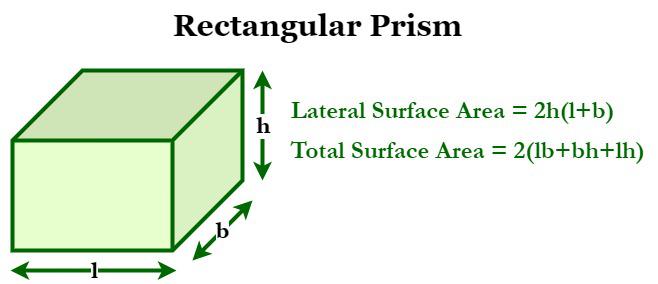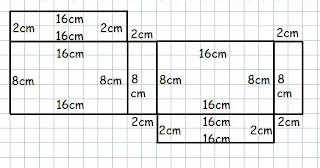

The area of the rectangular prism’s surface is the sum of the areas of its lateral faces and rectangular bases. Square units are used to measure the surface area of a rectangular prism.Ī rectangular prism’s surface area is the total area or region covered by its six faces. Prisms are solids with flat parallelogram sides and polygon bases that are identical.

Prisms are classified into several types, including triangular prisms, square prisms, rectangular prisms, pentagonal prisms, hexagonal prisms, and so on. You will learn more about the surface area of a rectangular prism in this article. To calculate the surface area of a rectangular prism, simply add the areas of the prism’s faces together. The formula for calculating the surface area of a rectangular prism is as follows: There are two types of areas in a rectangular prism:įinding the total area of all six faces of a rectangular prism allows you to calculate its total surface area. The lateral surface area of a prism is the total of the area of the faces. Total Surface Area of Rectangular Prism.Lateral Surface Area of Rectangular PrismĪ rectangular prism’s total surface area equals 2(lb + bh + lh) square units.

Lateral surface area of a rectangular prism equals 2(l + b) h square units Where, l equal the length of the rectangular prism,ī equals the breadth of the rectangular prismįor understanding the topic in a fun way, do visit Cuemath, where the tutors are experts in Maths and you learn Maths in the most interesting manner. The volume of an oblique prism is its space occupied in the three. Since there is no direct formula to calculate the surface area of an oblique prism, it is not in common practice. Example of Surface Area of Rectangular PrismĪssume you have a box that needs to be wrapped as a gift. In an oblique prism, the lateral faces are parallelogram-shaped and may or may not be congruent every time based on the different shapes of the prisms. You must calculate the amount of wrapping paper required to cover it. Under 3-D Figures, we can calculate the total surface area which is equal to curved surface area+ area of top and bottom.


 0 kommentar(er)
0 kommentar(er)
